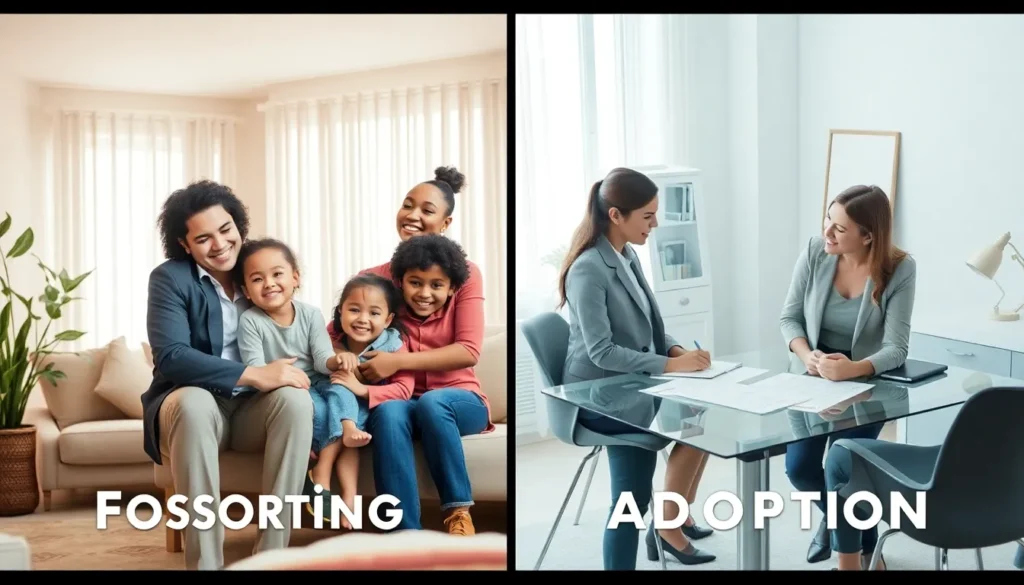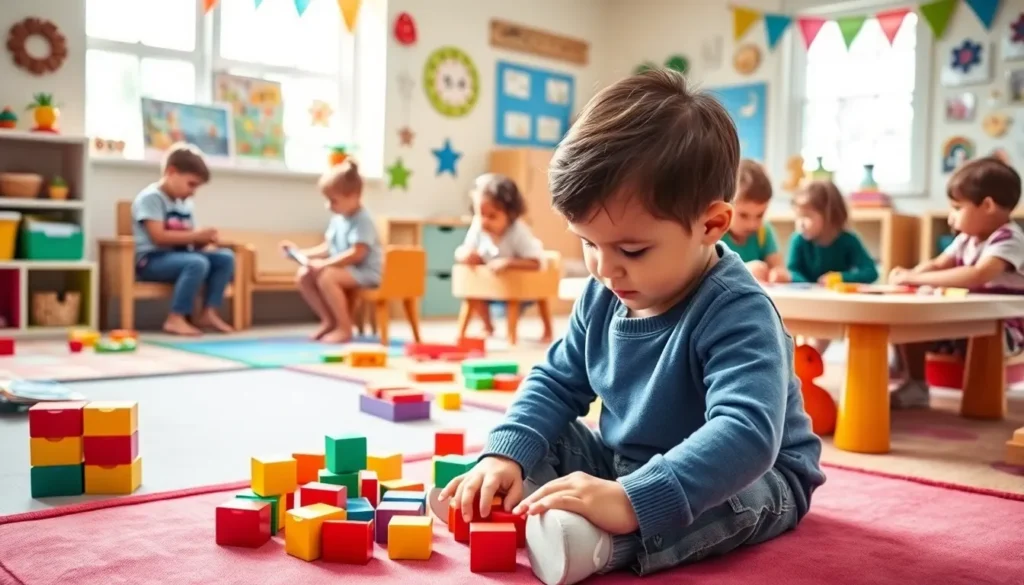Navigating the emotional terrain of fostering and adoption can feel like trying to solve a Rubik’s Cube blindfolded. Many people find themselves wondering, “Is fostering just an extended babysitting gig, or is adoption more like a permanent house guest?” Well, sit tight. In this text, we’ll dive deep into these two crucial aspects of child care. You’ll discover what sets them apart and the unique benefits they each offer. Whether you’re considering opening your home to a child or just curious, this guide is your ticket to understanding these important options with a bit of humor and a lot of insight.
Table of Contents
ToggleUnderstanding Fostering

What Is Fostering?
Fostering involves temporarily caring for children who aren’t able to live with their biological families. It’s a bridge, a pause, or a step in a greater journey where children might await reunification with their families or transition to adoption. This arrangement can last days, months, or even years, depending on the situation. And here’s a fun fact, foster homes come in all shapes and sizes, from solo caretakers to big families.
The Role of Foster Parents
Foster parents provide more than just a roof over a child’s head. They offer stability, love, and a supportive environment, which is crucial for a child experiencing upheaval. In many cases, they collaborate with social workers, attend meetings, and help visits with biological families, ensuring that the child feels secure through all the changes.
Benefits of Fostering
Fostering can be a fulfilling experience. Not only does it give children a sense of normalcy during turbulent times, but it also allows foster parents to make a real difference in a child’s life. Plus, many foster parents report feeling immense joy and purpose, knowing they are providing care when it’s needed most. And who doesn’t love a feel-good story?
Understanding Adoption
What Is Adoption?
Adoption is a lifelong commitment that establishes a legal relationship between an adoptive parent and a child. This process provides children with forever homes and families willing to love and nurture them unconditionally. Adoption can occur domestically or internationally, and it encompasses various types, including open or closed adoptions.
The Role of Adoptive Parents
Adoptive parents step into a role that requires unwavering commitment. They provide a stable home, emotional security, and financial support. Also, they tend to be advocates for their children, helping them navigate the complexities of identity and belonging. Adopting a child is often seen as gaining a new family member, and this emotional bond can run deep.
Benefits of Adoption
Adoption has the potential to change lives, both for the child and the adoptive parents. Children find stability and a sense of belonging, while adoptive parents experience the love and joy of completing their families. Also, many adoptive families find a rich sense of community among others who have walked similar paths, sharing experiences and support.
Key Differences Between Fostering and Adoption
Legal Relationship and Permanence
At the heart of the difference lies legal permanence. Adoption creates a lifelong relationship recognized by the law, while fostering is a temporary arrangement. If you love the idea of parenting, with no strings attached, fostering might be for you. Conversely, if you’re ready to make a lifelong commitment, adoption is the way to go.
Duration of Care
Duration is another significant aspect. Fostering can last for a few days to several years, based on circumstances surrounding the child. Adoption, on the other hand, is permanent from day one. This can be a game changer depending on how much commitment one wants to give.
Emotional and Financial Aspects
Emotionally, fostering allows parents to help children in transitional phases, whereas adoption involves the complex emotional ties that come with permanence. Financially, foster parents might receive stipends for care, but adoptive parents typically bear the full cost of raising a child, which encompasses private fees, legal costs, and more.
Choosing Between Fostering and Adoption
Factors to Consider
Choosing between fostering and adoption is no small feat. Parents should consider their lifestyle, financial situation, and long-term goals. Are they open to a temporary arrangement, or do they seek a permanent family member? Each choice carries its own unique set of responsibilities and rewards.
Personal Motivations and Goals
Understanding personal motivations is crucial. Some might aspire to support children in need through fostering, while others may dream of creating a family through adoption. Reflecting on these goals can help clarify which path may be the right fit.
The Impact on Children
Eventually, the choice affects not only the parents but also the children involved. Fostering can provide temporary respite and support, while adoption offers a sense of belonging and stability. Whatever path one chooses, the goal is to enhance a child’s life.




